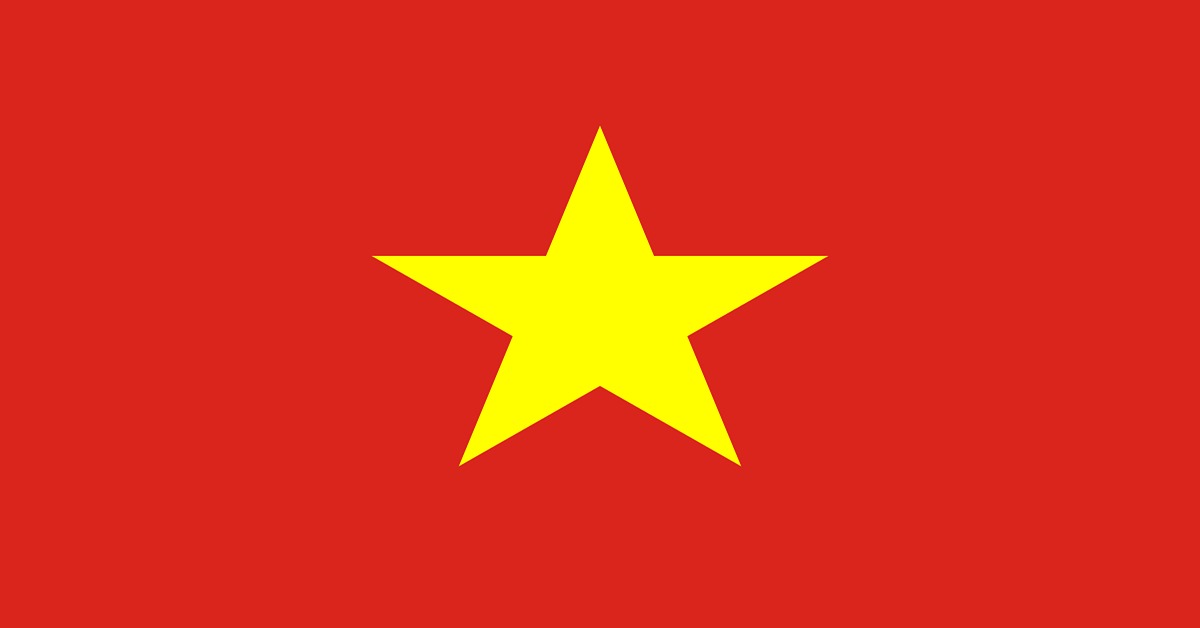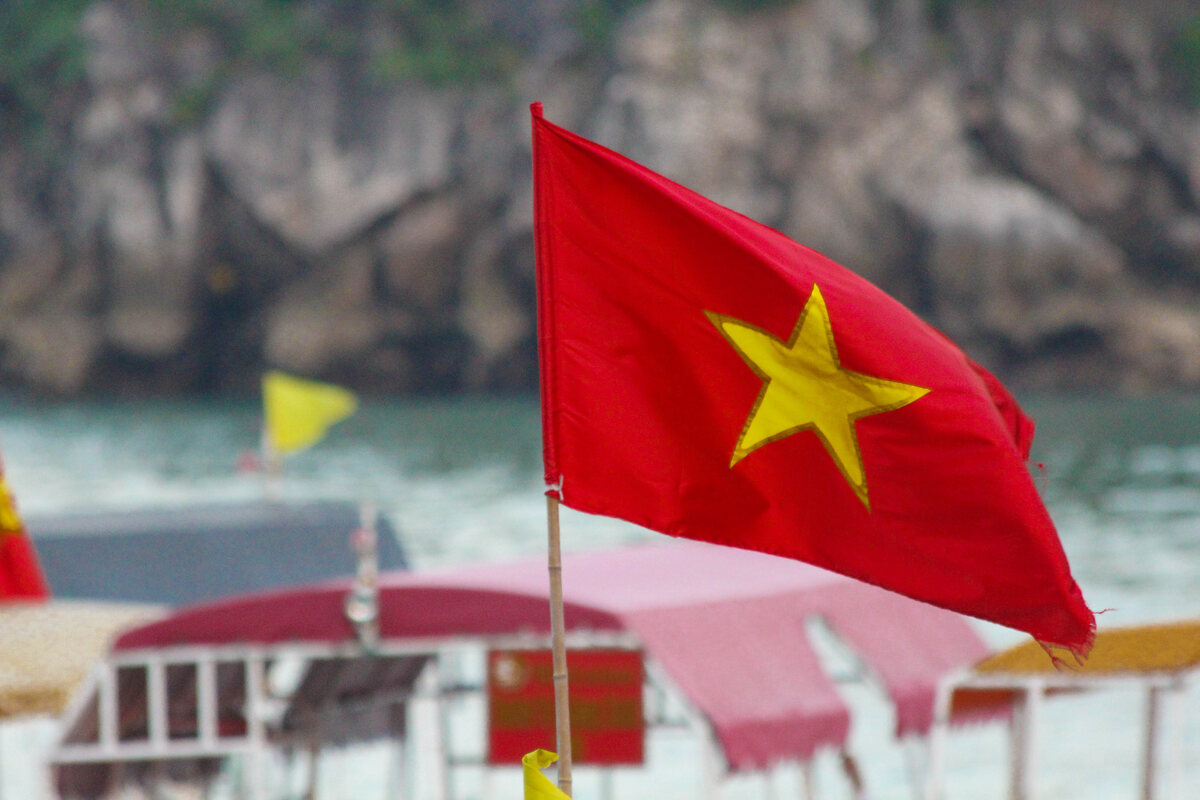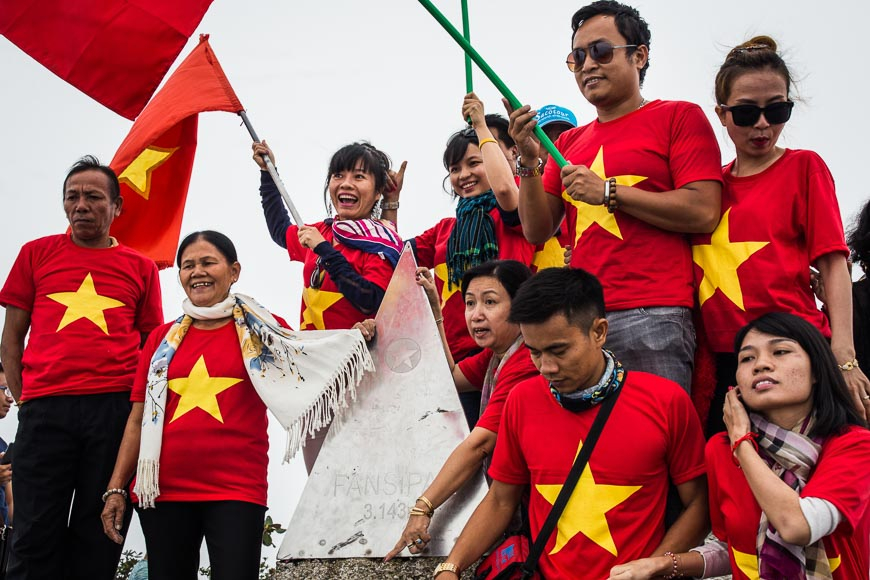
The Symbolism of the Vietnamese Flag
The Vietnamese flag, a simple yet powerful symbol, embodies the nation’s rich history and aspirations. Its striking design, consisting of a red field with a golden star, carries deep meaning and significance.

The Symbolism of the Vietnamese Flag
The Vietnamese flag, officially known as the Gold Star Flag, is a potent symbol of the nation’s history, culture, and aspirations. Its simple design, consisting of a red field with a large yellow star in the center, carries profound meaning.
The Red Field of Vietnamese Flag:
- Revolution and Sacrifice: The vibrant red color symbolizes the revolutionary spirit and the blood shed by Vietnamese people throughout history in their struggle for independence and freedom. It represents the courage, determination, and sacrifice of countless Vietnamese heroes who fought against foreign domination.
The Golden Star of Vietnamese Flag:
- Unity and Progress: The five-pointed golden star represents the unity of the five main social classes in Vietnamese society: intellectuals, farmers, workers, businesspeople, and soldiers.
- Hope and Aspiration: The star also symbolizes the aspirations of the Vietnamese people for a bright future, filled with peace, prosperity, and social justice. It signifies the nation’s commitment to progress and development.
Together, the red field and the golden star embody the spirit of Vietnam, a nation that has endured countless hardships and emerged as a resilient and proud country. The flag serves as a powerful symbol of national identity, inspiring unity and patriotism among the Vietnamese people.
A Symbol of Revolution and Unity: The Vietnamese Flag

The Vietnamese flag, with its striking red field and golden star, is a powerful symbol of the nation’s history and aspirations. Its design carries deep significance, reflecting the country’s revolutionary past and its hopes for a prosperous future.
Historical Context
The flag was officially adopted on September 2nd, 1945, shortly after Vietnam declared its independence from French colonial rule. This marked a significant moment in the country’s history, as the flag became a symbol of national unity and resistance against foreign domination.
Adoption as the National Flag
On September 2, 1945, Ho Chi Minh declared Vietnam’s independence from French colonial rule, and the red flag with a golden star was officially adopted as the national flag of the Democratic Republic of Vietnam.
This marked a significant moment in Vietnamese history, symbolizing the nation’s liberation and its aspirations for a new era.
The Legacy
The Vietnamese flag continues to inspire and unite the Vietnamese people. It is a powerful symbol of national pride and a reminder of the sacrifices made by generations past. As Vietnam continues to develop and grow, the flag remains a constant reminder of the nation’s rich history and its bright future.
Applications of the Vietnamese Flag

Official Use of Vietnamese Flag
- Government Buildings: The flag is prominently displayed on government buildings, including the National Assembly, the Presidential Palace, and government offices.
- Diplomatic Missions: It flies over Vietnamese embassies and consulates worldwide.
- Military Ceremonies: The flag is used in military parades, ceremonies, and memorials to honor the sacrifices of soldiers.
- National Holidays and Celebrations: The flag is widely displayed during national holidays like Independence Day (September 2nd) and Reunification Day (April 30th).
Popular Culture of Vietnamese Flag
- Art and Literature: The flag is often depicted in paintings, sculptures, and literature as a symbol of national identity and pride.
- Fashion and Design: The flag’s colors and symbols are incorporated into clothing, accessories, and other products.
- Public Rallies and Protests: The flag is used to express patriotism and support for national causes.
Protocol and Etiquette
- Respect for the Flag: The Vietnamese flag is treated with great respect. It is never allowed to touch the ground or be displayed below another flag.
- Flag Etiquette: There are specific protocols for displaying and lowering the flag, especially during official ceremonies.
Special occasions using Vietnamese flags
The Vietnamese flag is a prominent feature in various special occasions, symbolizing national pride and unity. Here are some key occasions where the flag is prominently displayed:
National Holidays:
- Independence Day (September 2nd): The flag is flown widely across the country, adorning streets, buildings, and homes. Special ceremonies are held to commemorate the nation’s independence.
- Reunification Day (April 30th): This day marks the end of the Vietnam War and the reunification of North and South Vietnam. The flag is displayed prominently to celebrate this historic event.
Cultural and Religious Festivals:
- Tet (Lunar New Year): During the Lunar New Year, Vietnamese people often decorate their homes and businesses with flags to welcome the new year and bring good luck.
- Other Festivals: Many local festivals and cultural events incorporate the national flag as a symbol of unity and patriotism.
Official Ceremonies and Events:
- Government Events: The flag is prominently displayed at government buildings, official ceremonies, and diplomatic events.
- Military Ceremonies: The flag is used in military parades, ceremonies, and memorials to honor the sacrifices of soldiers.
- Sporting Events: The flag is often flown at sporting events, especially international competitions where Vietnamese athletes participate.
Everyday Life:
- Homes and Businesses: Many Vietnamese people display the flag outside their homes and businesses as a symbol of national pride.
- Clothing and Accessories: The flag’s colors and symbols are often incorporated into clothing, accessories, and other products.
By understanding the significance of the Vietnamese flag, we can appreciate its role in shaping the nation’s identity and inspiring its people.
Creative Ways to Incorporate the Vietnamese Flag into Fashion and Accessories
The Vietnamese flag, with its striking red field and golden star, is a powerful symbol of national pride. Here are some creative ideas for incorporating it into fashion and accessories:
Clothing:
- T-shirts: Simple designs with the flag as a central motif or more complex patterns incorporating the flag’s colors.
- Hoodies: A cozy and stylish way to show your patriotism.
- Dresses and skirts: Flowy dresses or skirts with subtle flag patterns or accents.
- Hats: Baseball caps, beanies, or bucket hats with the flag embroidered or printed on them.
Accessories:
- Keychains: Small, portable items featuring the flag’s colors or symbol.
- Bags: Tote bags, backpacks, and purses with flag-inspired designs.
- Jewelry: Necklaces, bracelets, and earrings with flag-themed charms or pendants.
- Phone cases: Protect your phone with a stylish case featuring the Vietnamese flag.
Home Decor:
- Flags: Hang a Vietnamese flag in your home or office to show your patriotism.
- Pillows and cushions: Decorative pillows with flag patterns or embroidered stars.
- Wall art: Paintings, posters, or tapestries featuring the flag or Vietnamese landscapes.
See also:
